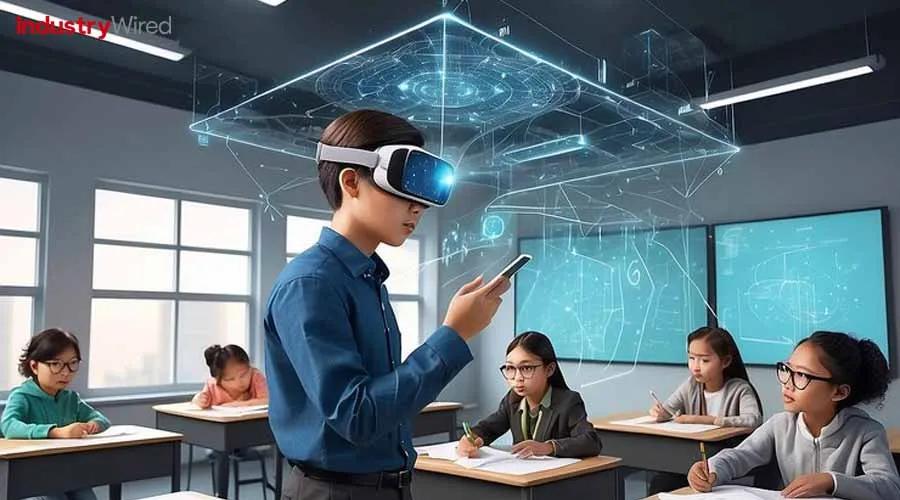Mastering VR/AR in Education: Essential Strategies for Training Teachers to Use Digital Tools Effectively
Virtual Reality (VR) and Augmented Reality (AR) technologies are transforming education by offering immersive,interactive learning experiences. While these digital tools can unleash unprecedented engagement and understanding in the classroom, one significant challenge remains: empowering teachers to integrate VR and AR effectively into their teaching practices.
This complete guide explores proven strategies for training teachers in VR/AR for education, highlights real-world case studies, discusses the benefits of mastering these tools, and provides practical tips to ensure prosperous adoption. If you’re passionate about educational technology, teacher training, or next-generation learning, read on to discover how to facilitate digital transformation in your school.
Why mastering VR/AR in Education Matters
Incorporating VR and AR in education enables:
- Enhanced engagement: Immersive simulations capture student attention and boost motivation.
- Deeper understanding: Complex concepts are visualized interactively, improving comprehension.
- Differentiated instruction: Content can be tailored to accommodate diverse learning styles.
- Real-world skills advancement: Students practise decision-making and problem-solving in safe,virtual environments.
However,teacher readiness is essential for unlocking these benefits. Educators must be equipped with the skills, confidence, and resources to wield VR and AR effectively, ensuring technology is used to amplify rather than complicate learning outcomes.
Challenges Faced by Teachers When adopting VR/AR in the Classroom
Despite the promise of VR/AR educational technology, teachers often encounter:
- Lack of familiarity with digital tools
- Insufficient training and support
- Overwhelming choice of software and hardware solutions
- Concerns about classroom management with immersive tech
- Budget and equipment constraints
Overcoming these hurdles requires a strategic, supportive training approach focused on practical classroom integration.
Essential strategies for training teachers to Use VR/AR Digital Tools Effectively
1.Start with Foundational Knowledge
Before diving into advanced applications, teachers should gain a solid understanding of:
- differences between VR and AR
- Examples of VR/AR in education (e.g., virtual field trips, 3D modeling, science simulations)
- How immersive technologies align with curriculum goals
2. Interactive, Hands-on Workshops
- Provide educators with demo devices (e.g.,Oculus Quest,Google Cardboard,AR-enabled tablets)
- Facilitate guided exploration: Let teachers experience VR/AR lessons as students woudl
- Encourage collaborative lesson planning using real curriculum topics and integrating VR or AR content
- Use scenario-based activities that simulate classroom situations and troubleshooting
3. Ongoing Professional Development and Communities of Practice
- Organize regular PD sessions and webinars focused on advanced VR/AR techniques
- Create peer support groups and online forums for sharing tips and resources
- Connect with global education technology networks and showcase best practices
4. Accessible, Step-by-Step Resource Guides
- Develop clear, concise digital and print manuals
- Provide video tutorials highlighting setup, basic use, and lesson integration
- Create troubleshooting FAQs specific to your VR/AR platforms
5. Align VR/AR Use with Curriculum Standards
- Offer lesson templates and content packs mapped to national and state standards
- Train teachers to evaluate whether specific immersive activities support desired learning outcomes
6. Evaluate and Iterate
- Collect feedback from teachers and students after pilot programs
- Adjust training methods based on feedback and new technological advances
Benefits of VR/AR for Teachers and Students – Real-Life Examples
Case Study: Virtual Field Trips at Midvale High School
Challenge: Budget limited field trip opportunities.
Solution: Science teachers used Google Expeditions to take students on virtual visits to rainforests and planets.
- Students reported higher excitement and remembered more key facts for assessments.
- Teachers felt more confident blending VR activities with conventional lesson plans after hands-on training workshops.
Case Study: Augmented reality for History Learning
Ms. Rivera, a middle school history teacher, used AR apps to overlay historic battle maps on classroom desks.
- Students interacted with digital soldiers and artifacts, increasing engagement and retention.
- Ms. Rivera highlighted the importance of ongoing peer support in troubleshooting AR app tech issues.
Practical Tips to Integrate VR/AR Digital Tools in the Classroom
- Start Small: Begin with one device or app, and test it with a single class or lesson.
- Curate Content: Use reputable sources for VR/AR educational resources (e.g., Google Expeditions, zSpace).
- Assign Roles: Let students participate as VR/AR assistants to help with setup and troubleshooting.
- Ensure Accessibility: Account for students who may experience motion sickness or who have special needs.
- Gather Feedback: After each lesson, solicit input to refine technology use and boost learning outcomes.
First-Hand Experience: A Teacher’s Perspective
“When I first tried VR in my classroom, I was nervous about the technical side. But after my school offered a hands-on workshop, I felt much more confident. My advice: Don’t be afraid to experiment. Start with simple activities and lean on your colleagues.the student reactions are worth it!”
– Mr. Tim Nguyen, 5th Grade Teacher
Conclusion: Empowering Educators for the Future of Learning
The advent of VR/AR in education is an exciting possibility to redefine teaching and learning. But technology is only as powerful as the person wielding it. By prioritizing practical, ongoing, and supportive training strategies, schools can ensure teachers master digital tools, increasing both engagement and learning outcomes for students.
Whether you’re an administrator seeking sustainable teacher training models, an educator eager to experiment, or an edtech specialist building professional development content, remember: the journey to VR/AR teaching mastery begins with targeted support and a spirit of collaboration.
Ready to explore immersive technology in your school? Invest in teacher training today,and watch students thrive tomorrow.

